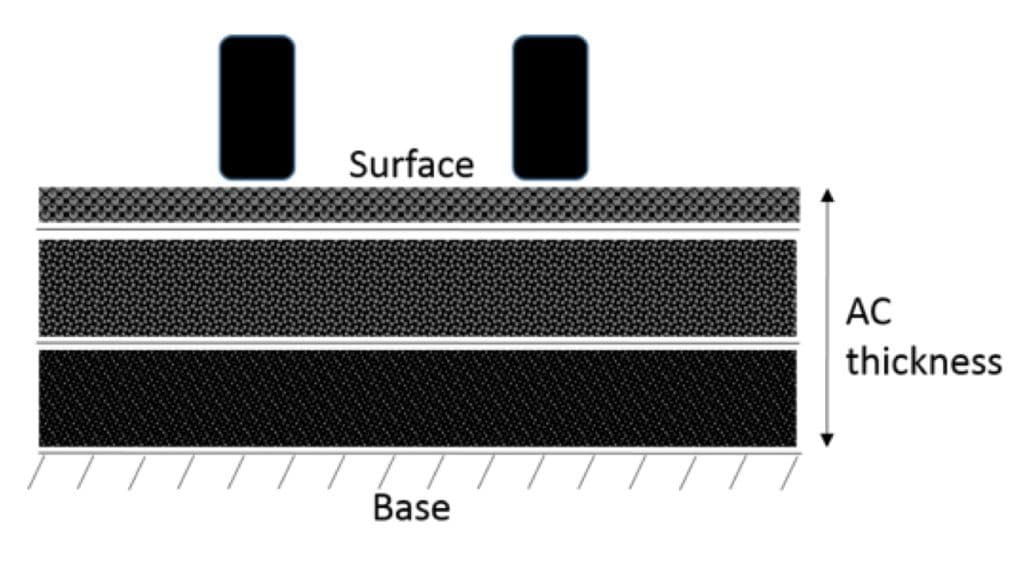Asphalt concrete (AC) pavements are complex structures. They are layered and held together with tack coat (in between layers) and prime coat (at the base). These coats are essentially the “glue” that holds the pavement together. But, if the glue fails, premature failure of the pavement will likely occur. That’s right—the fate of this pavement structure, in many respects, lies in the quality of the 0.25 mm-thick layer of tack coat between the layers! This is why interlayer bonding is so important.

The cost of building and repairing new roads is significant and continues to escalate. There is an effective way to improve the situation and ensure the dollars invested are used to their fullest intent and the most effective way possible. More than 50 percent of AC pavements’ design life is lost due to a lack of focus on interlayer bonding. The good news is addressing inadequate bonding is one of the least expensive and easiest problems to fix.
As we begin to look at solutions, let’s first review where applying a good bond coat sits in the eyes of agencies. It’s positive that so many agencies see the value. Before we go through the solution, however, it’s important to identify examples of specifications agencies use to address the need for a good bond.
AGENCY SPECIFICATIONS
Agency specifications (equivalent to laws in the civil engineering world) were written specifically to protect against adhesive removal. Below are just a few examples:
Agency A: The surface shall be satisfactorily cleaned before tack coat is applied…Asphalt shall be uniformly applied to a clean, dry surface with no bare areas, streaks or puddles… When tack coat has been damaged by traffic pick-up or contaminated by dirt, dust, or mud, the surface shall be cleaned and re-tacked prior to lay-down at no direct pay.
Agency B: The tack coat should be allowed to break and cure until a point in time that the tack coat does not pick-up or track due to traffic from trucks or the paving equipment.
Agency C: The tack coat shall be applied…without pickup or tracking of the bituminous material.
There is virtually no debate among experts regarding the validity of these specifications. However, specifications are meaningless without enforcement. This has been noted by the Florida D.O.T, where both the agency and contactors align on specs and pride themselves on making sure the tack is applied correctly and performs as intended. Collectively the agencies and contractors work together to ensure Florida has some of the best performing roads in the nation.
PROPERLY APPLYING TACK COAT
For proper interlayer bonding, the recommended steps include:
- Pre-application: Proper product selection, agitation, surface preparation, product integrity (avoiding dilution/contamination/segregation) and surface inspection.
- Application: Correct application temperature, proper application rate (including calibration), and uniform spray (100 percent coverage).
- Post-application: Avoid tack coat removal by following recommended set/cure waiting period and ensure proper hot mix application temperature.
Verifying that steps 1-3 occur correctly is VITAL to the pavement’s lifespan.
In the next installment of this series on the importance of interlayer bonding, we will explore the overall awareness and official stance of many asphalt experts relative to tack coat, best practices, and its impact on pavement design life.
